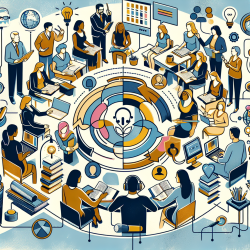Introduction
Specific Language Impairment (SLI) affects approximately 2-7% of children, presenting as difficulties in language production and comprehension despite normal overall development. Recent research by Badcock et al. (2012) offers new insights into the neural underpinnings of SLI, highlighting the importance of both structural and functional brain abnormalities. This blog aims to translate these findings into practical strategies for practitioners working with children affected by SLI.
Key Findings from the Research
The study conducted by Badcock et al. utilized voxel-based morphometry and functional MRI to investigate the brain structure and function in individuals with SLI compared to unaffected siblings and typical peers. Key findings include:
- Increased grey matter in the left inferior frontal gyrus (Broca’s area) in children with SLI.
- Decreased grey matter in the right caudate nucleus and superior temporal cortex bilaterally.
- Reduced functional activation in the left inferior frontal cortex and superior temporal cortex during language tasks.
Implications for Practitioners
Understanding these neural differences can enhance therapeutic approaches for children with SLI. Here are some practical steps practitioners can consider:
- Tailored Interventions: Focus on exercises that stimulate the left inferior frontal gyrus and superior temporal cortex, such as auditory naming tasks and language comprehension exercises.
- Monitoring Progress: Use assessments that measure both receptive and expressive language skills to track improvements and adjust interventions accordingly.
- Collaborative Approaches: Work closely with neurologists and neuropsychologists to develop comprehensive care plans that address both cognitive and linguistic aspects of SLI.
Encouraging Further Research
While this study provides valuable insights, it also highlights the need for further research to fully understand the complex relationship between brain structure and function in SLI. Practitioners are encouraged to participate in or support ongoing research efforts, which could include:
- Longitudinal studies to observe how brain structure and function evolve with intervention.
- Exploration of genetic factors that may contribute to the structural abnormalities observed in SLI.
- Investigation into the role of environmental factors and their impact on brain development in children with SLI.
Conclusion
The study by Badcock et al. underscores the importance of integrating knowledge of brain structure and function into the treatment of SLI. By adopting data-driven approaches and remaining engaged with current research, practitioners can significantly improve outcomes for children with SLI. To read the original research paper, please follow this link: Co-localisation of abnormal brain structure and function in specific language impairment.










